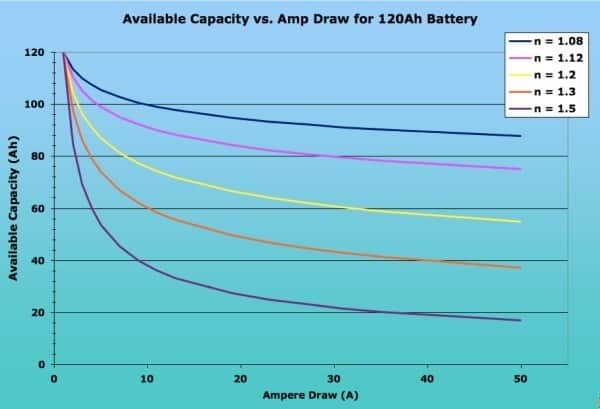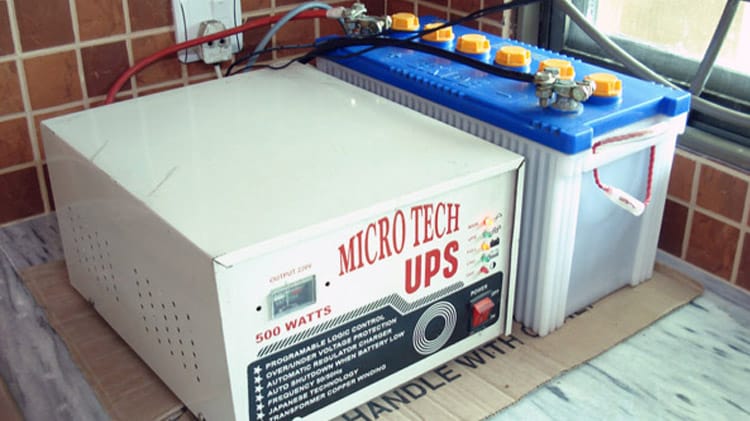Following our previous guide on calculating the right UPS capacity for you, today we move on to the next part in the series. We are going to focus on choosing the right battery size for your UPS.
Calculating the UPS power rating was fairly simple. For the average Joe (or Junaid) out there, finding out the right size of battery, especially one which can get you your desired backup time is fairly difficult to understand.
Read More: Here’s How You Can Calculate the Right UPS Capacity for Your Needs
That’s why today I will guide you about how to calculate the battery size for your UPS in a fairly simple manner.
Know Your Basics & Definitions
Most of you may be already familiar with the following terms but its never a bad idea to refresh your memory. You can skip to the next section if you want to get to the nitty gritty of calculating your battery size.
- Load is the power that is consumed by your UPS. You can also use your UPS’s maximum capacity if you want to calculate battery capacity for a certain time duration at max usage.
- Runtime is the time duration you want your batteries to backup for.
- Input is the UPS’s battery input voltage. UPS with smaller power ratings require a single 12V battery while larger ones need 24V (2 batteries) or 36V (3 batteries).
- Ah is the battery capacity rating which denotes the number of amperes the battery can provide in one hour.
- Power factor and UPS efficiency are used to identify the expected power loss and actual power you use. A UPS uses some of the power for its internal circuitry while some power is lost to wiring and connections. Power factor of your electrical appliances also results in reducing you maximum usable energy.
- Charger speed also needs to be kept in mind as a UPS with a slow charger cannot charge large batteries in short amount of time (thanks to regular loadshedding). Your UPS should be capable of charging your batteries in your required time.
Understanding Battery Capacity
Lets start here.
Battery capacities are measured in Ah, which stands for Ampere-hour or the number of amperes the battery can output in an hour. The Ah rating is usually mentioned on all lead-acid and dry batteries in a bold and large font.
If you don’t want to read technical details, skip the to last section.
The more the Ah rating, the more the battery capacity. Still with me here?
Here’s where it gets a bit complex. The Ah rating isn’t consistent and varies a lot depending on:
- the temperature,
- load on the battery,
- type of battery.
To quote an example, lead-acid batteries show results that vary by 10-15% under the same testing conditions.


The Ah rating is generally calculated by the manufacturer under a certain Runtime (usually 20 hours). Let’s say you have a battery with a 120Ah rating. That means that it is tested with a load current of 6A for 20 hours before it runs out of juice.
The rating is not final and a fixed runtime is used to standardize battery ratings. So if you use the same 120Ah battery with double the load (12A), it will last significantly less than 10 hours (10 to 15 percent less). Similarly, when you use the battery during loadshedding and consume its energy in a single hour, its available Ah rating decreases.
The more the load on your UPS, the faster its available runtime decreases.
For the same reason, an estimated factor is used to roughly estimate a battery’s Ah rating for long or short time periods.
- For a runtime of less than 2 hours, a factor of 1.5 is used.
- For a runtime of over 2 hours, a factor of 1.3 is used.
The above factor is for lead-acid batteries. For AGM batteries, you can use 1.05–1.15 and for Gel batteries, 1.10–1.25 can be used.
How to Calculate Battery Size
Battery size can be deduced by using a couple of formulae.
First we need to calculate the load current and then we need to multiply it by the runtime factor (as mentioned above).
Lets take an example here:
- Load = 1000W (Can be calculated using our previous guide here or it can be max UPS capacity)
- UPS Input = 24V
- Required Runtime = 1.5 hours
- UPS Efficiency/Power Factor = 70% or 0.7 (this should be used if you don’t want to estimate it)
- Battery type = Lead-Acid (So runtime factor of 1.5)
Load Current for 1 hour = (Runtime Factor x Load) / (UPS Efficiency x UPS Input) = 1.5 x 1000/ (0.7*24) = 89.29A
Load Current for 1.5 hours = Answer x 1.5 = 89.29 x 1.5 = 133.94Ah
Now that we know our current usage for 1.5 hours, calculating the battery size is easy. We need battery size of 133.94Ah. The nearest round number is 134Ah.
In our case, we need 2 batteries so we will connect 2 67Ah batteries in series to get 1.5 hours of backup time. Since 67Ah batteries are not available, we can get 65Ah ones for slightly less backup or slightly larger ones for more backup time.
All you need to do is list the numbers like we did in our example and use the mentioned formulas to get your battery size for your desired battery backup time.
If there’s any confusion regarding this post, do sound off in the comments below. We will be bringing you the next UPS guide in the coming days so stay tuned.
Have something to say or want to know more about this? Drop an email at [email protected] or find Aadil Shadman on Twitter (@ashadman25) or Facebook(fb.com/AadilShadman).





























@ Aadil – I have read both of your articles, the previous one about the UPS selection and the current one battery selection. While they are both informative, it will be better if you can combine these. While there is an approach to select UPS & battery load wise, the more common trend is to select these (UPS & Battery) based on your pocket size and then select the load accordingly. Will appreciate if you can do an article based on cost approach as well.
Sir Generators Par Bhi Article Nikal Do !
Bhai aap par kia article likhna, Aap to chaltay phirtay Purzay hoo. aap ke liye to sirf aik hi baat hai, “GO KILL THE WAVES”
Kill Me & Win Jahaz
Seriously :P
mar do yaar koi
https://uploads.disquscdn.com/images/6be627dcc0d9fc1e882eb2b384123e10ec8c6b21d4908b100370df744a120816.jpg
hahahaha zabardast
Just buy a damn battery b/w 150ah to 200 for 12v and 2 batteries of 85ah to 150ah for 24v.
If we are considering LifePo4 batteries than this calculation can be correct. But with flooded batteries maximum DOD can be 60% after that or before that a good ups will perform low voltage cut off.
A 1000W load can not be run for 1.5 hours on 134 Ah battery, You will need 2 batteries of 150 Ah. Because it is very hard to find a 2KVA ups in 12 VDC.
Write on hybrid Ups as well…..
One moment silence for those people who skip the technical details :D
why are we connecting the 2 batteries in series? Shouldn’t it be connected in parallel to get the overall Ah.